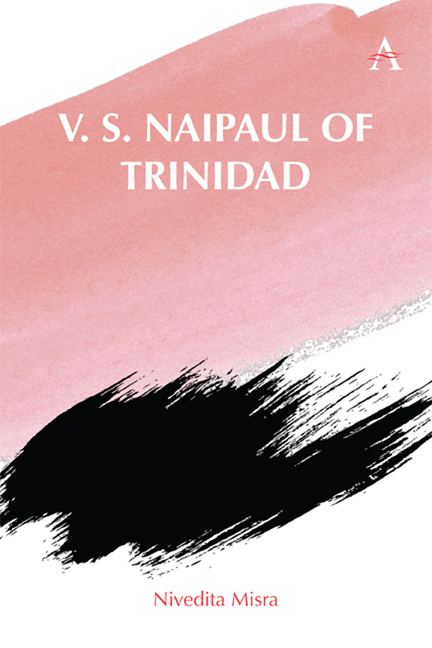Book contents
- Frontmatter
- Dedication
- Contents
- Foreword
- Introduction
- 1 Early Fiction of the 1950s: The Trinidad Years
- 2 The Interloper in Travel Writing
- 3 Mimicry and Experiments of the 1960s
- 4 Displacement Across Borders in the 1970s
- 5 The Imperial Vision of the 1980s
- 6 Redemptive Journeys in the 1990s
- 7 Composing again in the 2000s
- Conclusions
- Appendix A A Note on Trinidad
- Appendix B A Note on V. S. Naipaul’s Terminolog y and Use of Spellings
- Works Cited
- Index
Appendix A - A Note on Trinidad
Published online by Cambridge University Press: 27 March 2024
- Frontmatter
- Dedication
- Contents
- Foreword
- Introduction
- 1 Early Fiction of the 1950s: The Trinidad Years
- 2 The Interloper in Travel Writing
- 3 Mimicry and Experiments of the 1960s
- 4 Displacement Across Borders in the 1970s
- 5 The Imperial Vision of the 1980s
- 6 Redemptive Journeys in the 1990s
- 7 Composing again in the 2000s
- Conclusions
- Appendix A A Note on Trinidad
- Appendix B A Note on V. S. Naipaul’s Terminolog y and Use of Spellings
- Works Cited
- Index
Summary
The Caribbean is geographically situated between the Americas, almost like a bridge connecting the continents of North and South America. The population in Trinidad identifies itself as being of African, Indian, mixedrace, European, Middle Eastern and Chinese descent.
Trinidad was part of the Spanish empire from the time of its ‘discovery’ by Columbus in 1498 until 1797, when its political control was transferred to the British. Trinidad remained a plantation economy during the whole period of its colonial occupation. While there are no official estimates about the number of slaves brought into Trinidad until the abolition of slavery in 1834, it is estimated that 3.1 million Africans were shipped to the Americas across the Atlantic between 1662 and 1807.
Between 1838 and 1917, a total of 147,592 Indians had been imported to the sugar plantations in Trinidad and 239,000 in neighbouring Guyana (Deen 1998, p. 6). Of those indentured, 85% were Hindus and close to 14% were Muslims. Though indentureship was outlawed in 1917, the actual indenture period for those last indentured continued until 1920, when all the existing contracts were annulled.
According to the 2011 census, the so-called ‘East Indians,’ or the more politically correct term Indo-Trinidadians, constitute 35.43%, with 18.2% Hindus and 5% Muslims. The others are 34.22% Afro-Trinidadians, 7.66% mixed of African and East Indian and 15.16% mixed-other.
Culturally, East Indians are a strong community, maintaining their Hindu culture. Only 17% of Indians had converted to Christianity by the 1960s in Trinidad. The two main political parties, the People’s National Movement and the United National Congress, advocate an inclusive creole culture. Creole culture has a strong slant towards the steel band, the calypso and the carnival, which have traditionally been dominated by the Afro-Trinidadians. However, the Sanatan Dharma Hindu Mahasabha, the Swaha Satsang, the Chinmaya Mission and the International Society for Krishna Consciousness (Iskcon), among many other Hindu bodies, have a strong presence on the island of Trinidad. The Sanatan Dharma Hindu Mahasabha is the central body that operates over 150 temples, 50 schools, a radio station and a television station in Trinidad. They bring out their own almanac based on the coordinates in the western and southern hemispheres. The strong presence of a central body has led to the consolidation of the Hindus in Trinidad.
- Type
- Chapter
- Information
- V. S. Naipaul of Trinidad , pp. 191 - 192Publisher: Anthem PressPrint publication year: 2024



